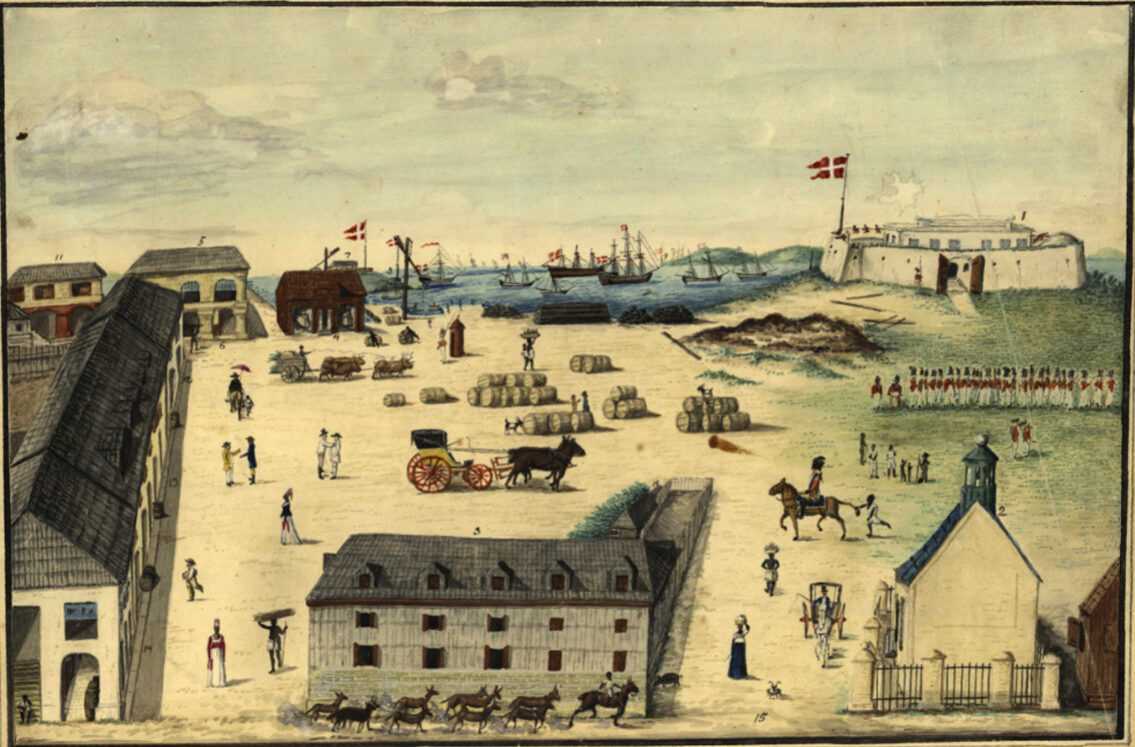Chapter 4
1514–1866, The Transatlantic Slave Trade
The Transatlantic Slave Trade was the largest forced migration of people in world history. Profits from the sale of enslaved humans and their labor laid the economic foundation for Western Europe, the Caribbean, and the Americas. The human cost was the immense physical and psychological toll on the enslaved. Their lives were embedded in every coin that changed hands, each spoonful of sugar stirred into a cup of tea, each puff of a pipe, and every bite of rice.
I doubt not this trade seems very barbarous to you, but it is . . . mere necessity, it must go on.
Willen Bosman, 1700
Commerce and Captivity
The financial legacy of the slave trade helped create the nation-states of Spain, Portugal, the Netherlands, France, Great Britain, and the United States, as well as others in the Caribbean and South America. Slave trade companies engaged in business throughout the Atlantic commercial highway which connected trade sites and created a vast enterprise of slavery. The church, merchants, families, and individuals benefited from these profits, which also helped build the large assets of many institutions.
Danish Slave Trade Fort Prinsensten, present-day Ghana
Danish Slave Trade Fort Christiansvaern, Danish West Indies, present-day St. Croix, U.S. Virgin Islands
Sugar: Driver of the Slave Trade
Ornate silver pieces were used to serve sugar cultivated by enslaved Africans in the killing fields of the western Atlantic World. From bonbonnieres filled with sweets to highly stylized sugar bowls and personalized tea caddies, elegant possessions showed that life was sweet for successful slave owners, financiers, slave traders, and consumers.
The Royal African Company
Royal African Company, trade logo
In 1660 King Charles II of England gave his brother James, the Duke of York, a royal monopoly to trade exclusively in gold and western African people. Enslaved people were branded with the initials DY for the Duke of York. The brutal trade helped to build the political and financial foundation of the nation.
The Dutch West India Company
Dutch West India Company Monogram
In 1621 the Dutch government granted the West India Company a monopoly over the Atlantic trade to challenge European rivals in the race for enslaved people and gold. The company established trading posts in Africa, plantations in Brazil and the West Indies, and ports and plantations in North America.
The South Sea Company Coat of Arms
The South Sea Company
In early 1700s the British South Sea Company secured the Spanish asiento, an exclusive contract granted by the King of Spain to provide an annual supply of enslaved Africans to the Spanish colonies. The company annually sent at least 4,800 enslaved African people from the West Coast of Africa to the Americas.
The Cadiz Slave Company
The Cadiz Slave Company trade logo
In 1767, the Spanish Cadiz Slave Company secured the asiento to supply 6,900 enslaved Africans to the Spanish colonies annually. The company fell short of fulfilling the quota and lost the contract, but remained in the trade, delivering enslaved Africans throughout the Caribbean.
We are torn from our country and friends, to toil for your luxury and lust of gain.
Olaudah Equiano, 1789
